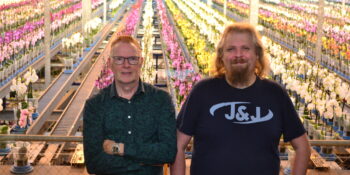
Auditor Henry van Riet (Photo credit: Els van den Hoek)
Auditors are used to audit physically and are therefore often on the road. This is not possible due to the corona virus. Audits are currently carried out remotely, if allowed by the standard owner. Henry van Riet, auditor of the MPS-ABC scheme at MPS-ECAS, tells about his experiences with remote auditing. He has been working for MPS-ECAS for a year now and he lives in Vessem in Brabant, close to the border with Belgium. In total, he now has performed approximately thirty MPS-ABC audits remotely. What do customers think of remote auditing and what is it like for an auditor who is used to being on the road?
In addition to MPS-ABC, MPS-ECAS also performs remote audits for MPS-Florimark GTP, MPS-Florimark TraceCert, MPS-Quality, MPS-Socially Qualified and MPS-Water Purification. Because of the benchmark with GLOBALG.A.P., a risk assessment is currently being carried out for MPS-GAP, based on which the certificate can be extended by several months.
Can you first tell us more about your background?
“Horticulture is in my blood. My parents owned a carnation nursery and I did the secondary horticultural school. Then I had a potted plant nursery with my wife and a tomato nursery for three years. I really enjoy being an auditor now. I visit several companies and every company is different. You will also find out that everyone has a different way of working. It is varied and educational work; I learn a lot from the companies I visit.”

Henry van Riet, auditor at MPS-ECAS, performing a remote MPS-ABC audit.
How does remote auditing work?
“I call a grower to make an appointment for the remote audit. I agree on a date and time and explain how a remote audit works. I noticed that if I tell in advance how a remote audit works, people are less concerned. Almost everyone agrees to a remote audit. One customer I called to make an appointment did not have a smart phone, so I decided to postpone the audit until it is possible to physically visit the company again. After the phone call, I send a confirmation summarizing everything, in which I also explain what information the grower must have available on the day of the audit.”
“I call the grower on the day of the audit. We first have an introductory meeting in which I again explain how the remote audit works. I also tell a bit more about my background, because I notice that it helps to take away some tension when I tell them that I have a background in horticulture. Then I check whether the grower has the requested documents ready. Subsequently, we do a video call in which we do a round about the company and in which we go through the documents. Together with the grower, I also view the stock via video calling, the grower is my eyes, so to speak. If this does not work well, customers can also send a photo. Finally, I have the final interview and I write the report. The conversation with the grower lasts about an hour to an hour and a half in total.”
What do customers think of remote auditing?
“Fortunately, almost all customers understand that we have chosen for remote auditing. Many growers are in a difficult situation because of the corona virus; I think it is important to show understanding for this. I try to be as flexible as possible. Until now I have the impression that most customers consider it a good experience. After all, we also ensure that they remain certified, so that growers also have their certificate when the trade picks up again.”
I think it is important to show understanding for the situation
You have now performed approximately thirty remote audits. How do you experience remote auditing?
“I enjoy remote auditing, but I really miss visiting the nurseries. Normally, I spend most of my time on the road, so it is weird to do the audit from home all of a sudden. Of course I don’t miss the traffic jams! Remote auditing is also occasionally difficult because the connection is sometimes poor. I also miss the impression I get from a company when I audit physically.”
How do you deal with this?
“During a physical audit, I often drive by once to get an impression of the nursery and I scan the environment when I take the first step indoors. This is not possible with a remote audit. I try to fix this by using street view from Google Maps. Then I actually drive by digitally; this gives me an impression of what the company looks like in real life. In addition, I always visit the company’s website, if available. Now that I’ve spent some time auditing in this way, I’m starting to get comfortable with it. But of course I feel like going back into the meadow!”



